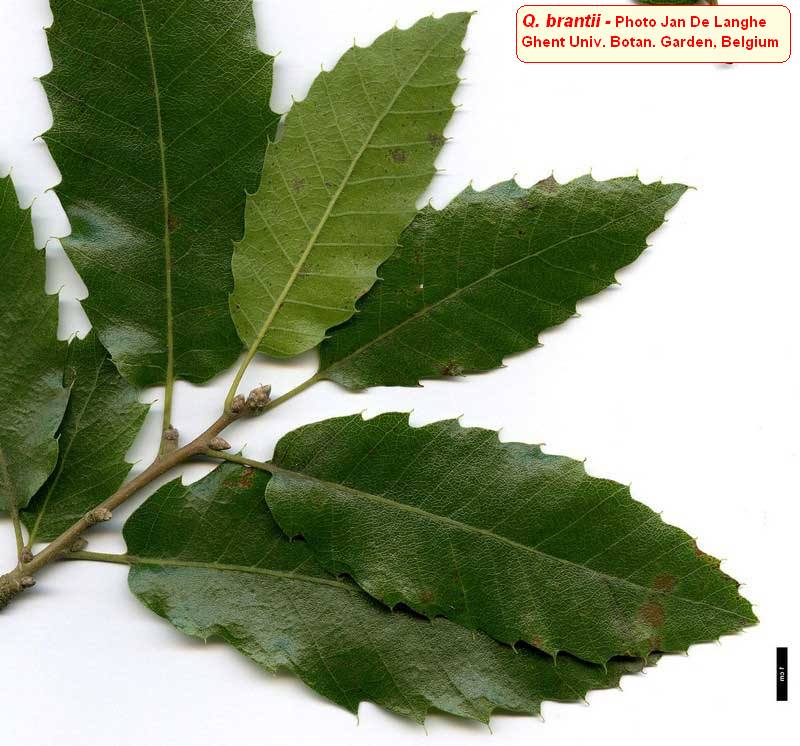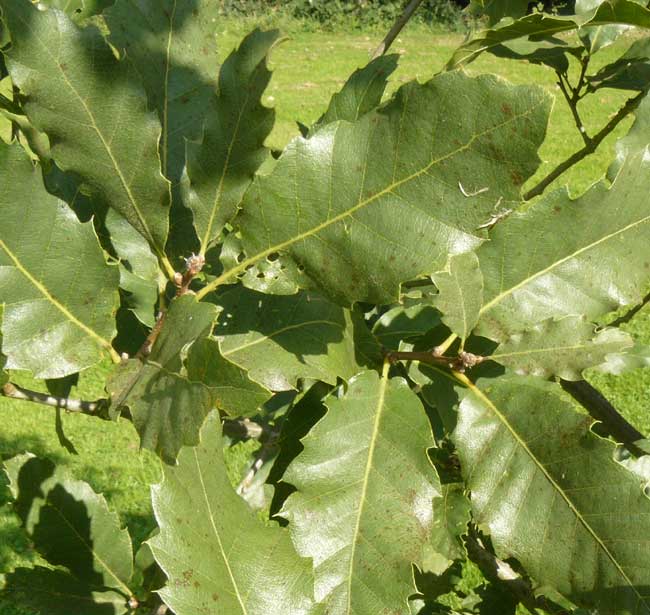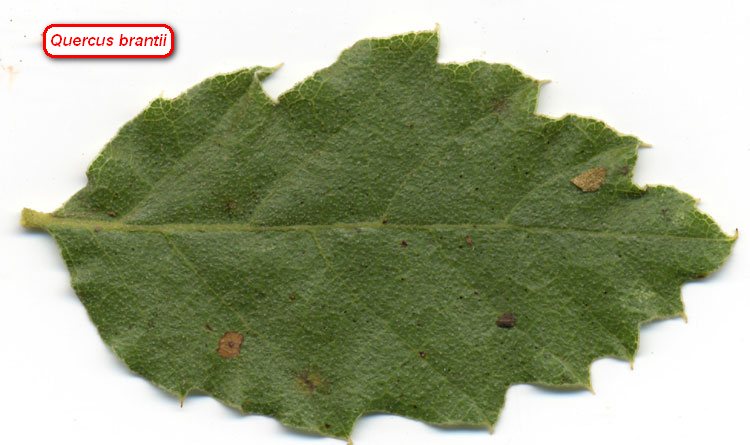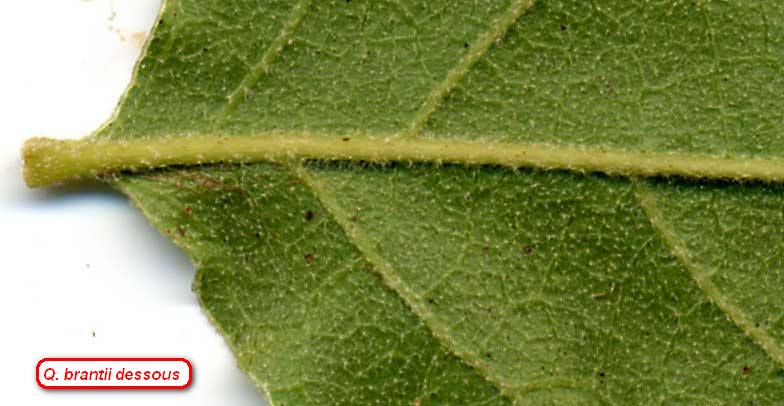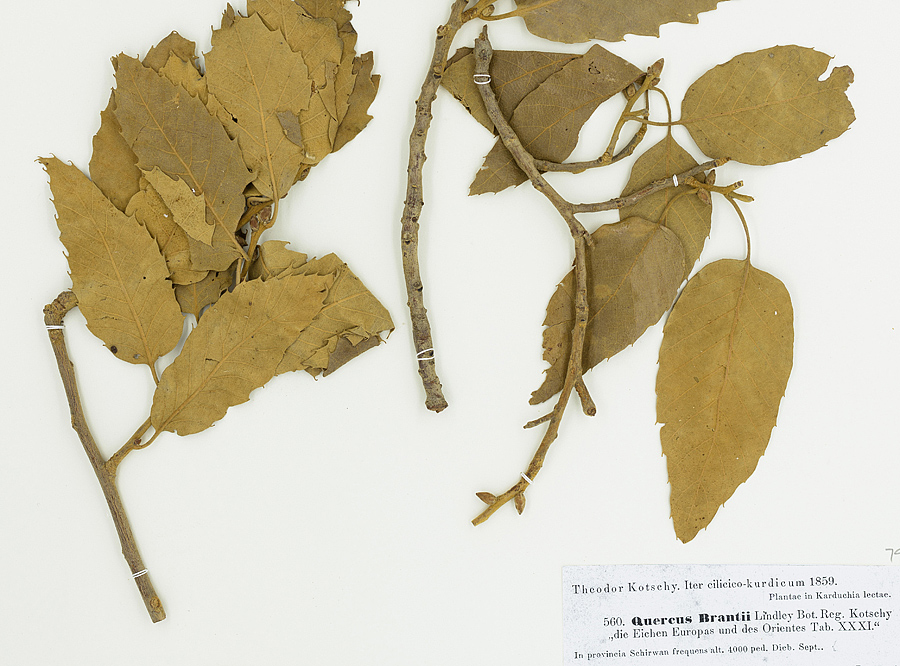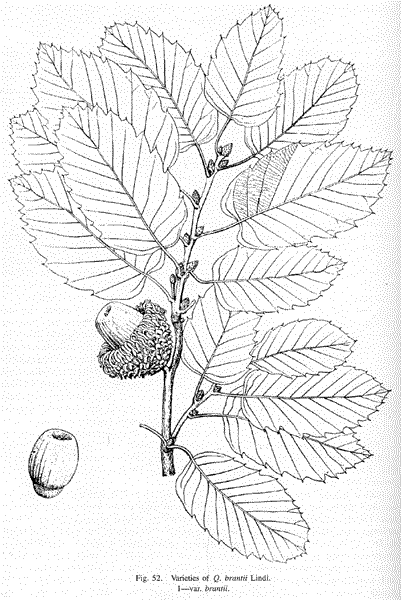| Quercus brantii | |
| Author | Lindl. 1840 Bot. Reg. 26: t. 41 1840 |
| Synonyms | persica Jaubert &t Spach
1843 brantii subsp persica (Jaub. & Spach) O.Schwarz 1936 aegilops subsp brantii (Lindl.) A.Camus 1936 aegilops subsp persica (Jaub. & Spach) Blakelock 1951 |
| Local names | |
| Range | East Turkey (Zagros Mounts); W and S Iran; N Iraq; Desert of Syria; 300 to 1900 m; |
| Growth habit | reaches 10 m, with trunk to 0.8 m in diametre; often smaller; rounded crown; |
| Leaves | 6-12 cm x 4-8, leathery, deciduous; oval or oblong oval; apex acute; base rounded or cordate; greyish green, scarcely stellate pubescent above; yellowish, glandular tomentum beneath, with stellate and glandular hairs, along with a few simple uniseriate trichomes; 8-14 pairs of regular teeth with long cusps (almost as long as the teeth); 8-16 vein pairs ending in the teeth; intercalary veins absent; petiole 1-2 cm long; |
| Flowers | male inflorescence 4-5 cm long;
pistillate inflorescence 15 cm long, with 1 or 2 cups; male flowers with
4-5 stamens; |
| Fruits | acorn to 5 cm long, with basal scar strongly convex, often depressed at apex; cupule subsessile, halfround or conical, 4 cm in diameter, 2-3 cm high, with long (5-7 mm), pubescent, narrow scales, upper ones recurved; rippening second year; edible; |
|
Bark, twigs and |
bark fissured, grey; stout, spreading branches; young twigs with yellowish pubescence; buds 2-5 mm long, conical, angled, pubescent; |
| Hardiness zone, habitat | hardy zone 7-8; all types of soils but prefers calcareous ones; very drought resistant; slow-growing in cultivation; |
| Miscellaneous | -- Sub-genus Cerris,
section Cerris, subsection Aegilops (with ithaburensis and macrolepis); -- Closely related to Q. macrolepis, from which it differs mainly in having leaves with a regular serration; -- Hybrids with Q.libani (= Q.x oophora Kotschy 1862, = Q.brantii subsp oophora (Kotschy) O.Schwarz 1936), and with Q. infectoria (= Q.x squamulosa Djavanchir 1977). |
| Subspecies and varieties |
In its range, this species is very variable in appearance
of leaves and characteristics of cupule; several varieties have been
described:
|
| Pictures |
|
